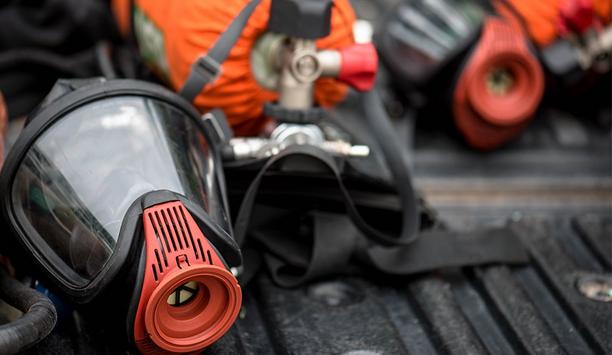Mathew Baxter is the Founder and CEO of the echelon group with responsibility for the management of echelon Consultancy, Pretium Frameworks and echelon Improvement Partnerships. Mathew has spent most of his working life in the construction sector.
The devastating Grenfell Tower fire has prompted what the government has referred to as ‘the biggest change in building safety for a generation’. So what do the Building Safety and the Fire Safety Bills mean in terms of emergent legislation and is the housing industry prepared for substantive change on this scale?
Fire Safety Bill
Let’s start with the new Fire Safety Bill, which has been designed to give clear definitive guidance principally around areas of responsibility for fire safety. One way of looking at the new Fire Safety Bill is as a piece of legislation designed to beef up the existing legislation, focused specifically around the envelope of the building.
The Fire Safety Bill makes it clear that the person designated as responsible has undertaken a fire safety survey around exterior walls (including cladding, balconies and windows) and individual flat walls entrance doors, where they open onto common parts to make sure they are compliant and if not, then to take any necessary remedial action and precautions to make that building safe. We suspect that demand for fire experts may rapidly outstrip supply.
Building Safety Bill
The Building Safety Bill proposes a significant amount of consultation is going to be required with residents
The Building Safety Bill proposes a significant amount of consultation is going to be required with residents. Every ‘higher risk’ property has to have a strategy around the program of change that it will need. Resident consultation exercises will result in organic documents that will live as long as that building is occupied.
Ideally all stakeholders (for example repairs contractors) coming in and out of properties should be encouraged and trained to take a holistic view of that property, and to be prepared to raise an alert, if they see something that is not right, for example, a fire door that has been propped open.
Checking and replacing old appliances
Many fires are caused by residents’ own appliances. Some local authorities are checking tenants’ appliances and if they seem unsafe, either removing or disconnecting them and in some cases, they are also providing free replacements.
Housing associations and landlords will need to demonstrate a comprehensive understanding of their property and stock. For example, if you have a cladded building, you need to know exactly what the specification of that cladding is. Not all cladding is equal and risk profiles vary. Intrusive surveys may be required to ascertain the exact construction and product used.
There is still a clear issue that many building owners/managers are unsure of what their building is clad in and how the cladding is fixed for the building. Effectively, this is something landlords need to get a comprehensive understanding of immediately, for fear of very rapid enforcement action from the Local Authority.
Adherence to fire safety regulation compliance
Local Authorities are entirely within their rights to approach housing associations and ask for copies of the fire safety regulation compliance of these buildings and if it has not been done then they can take action and that can include decanting the whole building and ordering remedial works
As previously mentioned, two new roles are also specified within the Building Safety Bill, that of the Accountable Person within an organization for fire safety and the Building Safety Manager. It is anticipated that the role of the Accountable Person role will need to be fulfilled by a senior member of staff within the client organization and the Building Safety Manager will have a high level of responsibility and accountability for maintaining the safety of the building.
Competency frameworks and resident engagement strategies
The Building Safety Bill may have a grace period, before it comes into force on existing buildings
The Building Safety Bill may have a grace period, before it comes into force on existing buildings and elements that are likely to be included are already being discussed, for example competency frameworks, resident engagement strategies and two separate roles, namely Building Safety Managers and Accountable Person.
One of the most significant changes that the Building Safety Bill will create is a new definition of buildings as ‘higher risk’ buildings. This category will obviously include high rise, but also student accommodation and supported living accommodation.
High risk buildings
Any building over 18 meters, or more than six floors high is immediately defined as high risk. The Bill also makes it clear that the new Building Safety Regulator (created under the Bill) can also add other buildings to the category at their discretion.
The Bill places a lot more responsibility on landlords and owners of those buildings. In fact, the Accountable Person has legal responsibility for those buildings, as long as they are occupied.
Assessment of fire safety risks
Responsibilities include the assessment of fire safety risks, co-operation with any remedial action in terms of fire safety, the registration of high-rise buildings, building safety information and the appointment of the building safety manager.
The Accountable Person has a duty to report the name and details of the Building Safety Manager to the Building Safety Regulator. This individual’s contact details have to be available to everyone in the building, a safety case report has to be undertaken and managed along with a risk assessment and an ongoing strategy for the safety of the building and information provided to the new regulator.
If the Building Safety Manager is found to be non-compliant then she/he risks a prison sentence. Many of the clients are appointing Building Safety Managers directly with a salary between £60,000 – £70,000. The guidance is that they should not look after more than five buildings each, as the responsibility carries too much weight for more and as such, this represents a significant resource for many landlords with a large portfolio of ‘higher risk’ buildings.
Undefined transition period for Act rollout
The new Building Safety Regulator will become the Building Control Authority for higher risk building
There is expected to be an as yet undefined transition period before the Act applies to existing buildings. As well as the changes that will be necessary to existing buildings, it is essential that consideration is given to the design and thought process behind new developments and new builds. There is a whole new regime for the design and construction phase.
The new Building Safety Regulator will become the Building Control Authority for higher risk buildings. Developers are no longer able to choose their building control authority at will. This imposes strict competency requirements on all duty holders working on higher risk buildings, including the client, the principal designer and principal contractor.
Impact of the two safety bills
The impact on these two Bills will have an enormous impact on leaseholders and indeed everyone involved in construction and building maintenance. The administrative burden and personal responsibility on those accountable will be equally enormous but, in our view, in the light of Grenfell, absolutely necessary.
Our advice to all our clients is to start planning ahead and to develop a strategy of how they will deliver all the aspects of the Building Safety Bill once it becomes legislation.


















